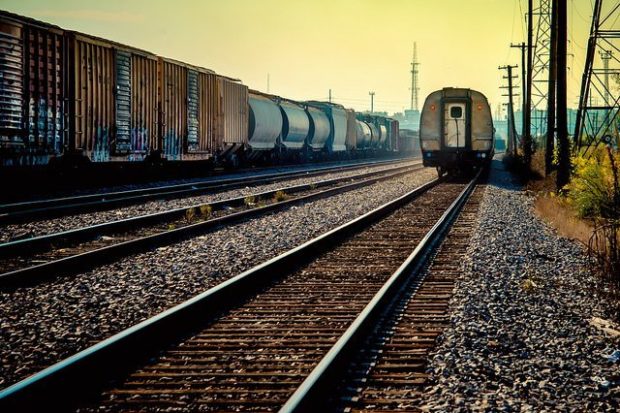
By Cherylyn Smith
(Author’s note: The following comments were posted on the California Air Resources Board (arb.ca.gov) Web site on Aug. 14. They raise issues that have occurred since my previous posting on that Web site (see the August 2015 Community Alliance). Notably, the first concern is in relation to the EPA-caused contamination of the Animus River in Colorado. It raises questions about the regulatory agency that will ultimately be assigned to the high-speed rail (HSR) project if the High-Speed Rail Authority (HSRA) were to continue to seek exemption from the California Environmental Quality Act (CEQA). AB 32 is the 2006 law that regulates greenhouse gas reduction efforts by the ARB through cap-and-trade.)
Concern No. 1
I previously submitted a comment on June 28 called an “Open Letter to the ARB.” It relates my three major objections to the HSR being funded by cap-and-trade revenues. Of all the issues presented in that letter, the HSRA’s ongoing effort to be released from CEQA is the most troubling. Having reviewed the AB 32 document and its revisions, I am struck by its reliance on CEQA as a guiding principle. To allow cap-and-trade to continue funding an agency that seeks CEQA exemption positions the ARB in direct violation of AB 32. In fact, your own agency, the ARB, is defined as carrying out “California environmental laws” as part of CalEPA. It is illogical, in fact illegal, to fund the HSR until the HSRA’s determination to avoid CEQA regulation ceases and until it recognizes its responsibility to remain in full compliance with CEQA.
Furthermore, i f CEQA is removed as a regulatory document, then only the National Environmental Policy Act (NEPA) would remain in effect, and the EPA would be the predominant agency overseeing environmental regulations pertaining to the HSR. Recent tragic events in Colorado are indicative of what happens when an agency such as the EPA, which is spread thinly across all the states, supersedes a state agency. The EPA simply does not have the focus that a state agency has on environmental matters within its own territory. Moreover, it is widely recognized that the NEPA is less specific and less rigorously enforced than CEQA. As it stands today, the CalEPA and the EPA are expected to work cooperatively to regulate the HSR project.
Resolution No. 1
It is the ARB’s responsibility to withhold cap-and-trade funding until the issue of the HSRA’s need to comply with CEQA is resolved.
Concern No. 2
Another concern that the ARB should recognize is the proximity of the HSR tracks to freight lines. It is imperative that the board work with appropriate federal and state agencies to determine an acceptable distance between freight and HSR tracks. Toxic freight passes through the Central Valley on a daily basis. The HSR poses some formidable problems in that speeds of up to 220 miles per hour cause turbulence and other conditions that could derail a passing train, especially by toppling empty passing freight cars. Because 12 HSR trains per hour will pass through the Valley, often in close proximity to freight lines, the probability of an accident is increased greatly. In addition, the 2011 HSR accident in China illustrates the threat inherent in viaducts passing over other train lines. These problems have been raised, yet they have not been addressed in a timely manner.
Furthermore, the ARB has an obligation to disadvantaged communities. Because so many of those communities are located near existing freight lines, they will be placed at significantly greater risk than most other communities will. It is incumbent upon the ARB to consult with such agencies as the Federal Railroad Administration and the California Public Utilities Commission, for example, to determine the probability of a catastrophic accident and to reevaluate the distance between the HSR and freight lines.
Resolution No. 2
To minimize the risk of a toxic accident in order to ensure public safety and uphold environmental equity, the ARB has an obligation to withhold the cap-and-trade funding of the HSR until the issue of safe distancing between freight and HSR lines is examined and resolved.
In my previous letter, I stated that the HSR would not reduce greenhouse gases and that it already has de-incentivized big polluters in their efforts to reduce greenhouse gases. Combined with the concerns stated here, these arguments compel the ARB to act immediately to halt the issuance of cap-and-trade revenues to the HSR.
*****
Cherylyn Smith is a retired educator, having served as a bilingual adviser in the Multilingual/Multicultural Department of Education for the Fresno Unified School District. She currently teaches part-time at Fresno City College. She organizes public discussions on critical issues affecting the Central Valley, such as water, immigration, fracking, toxic dumps and high-speed rail. She has interviewed parties to the Prop 1A lawsuit on KFCF 88.1 FM. Contact her at cherylynsmith@aol.com.
